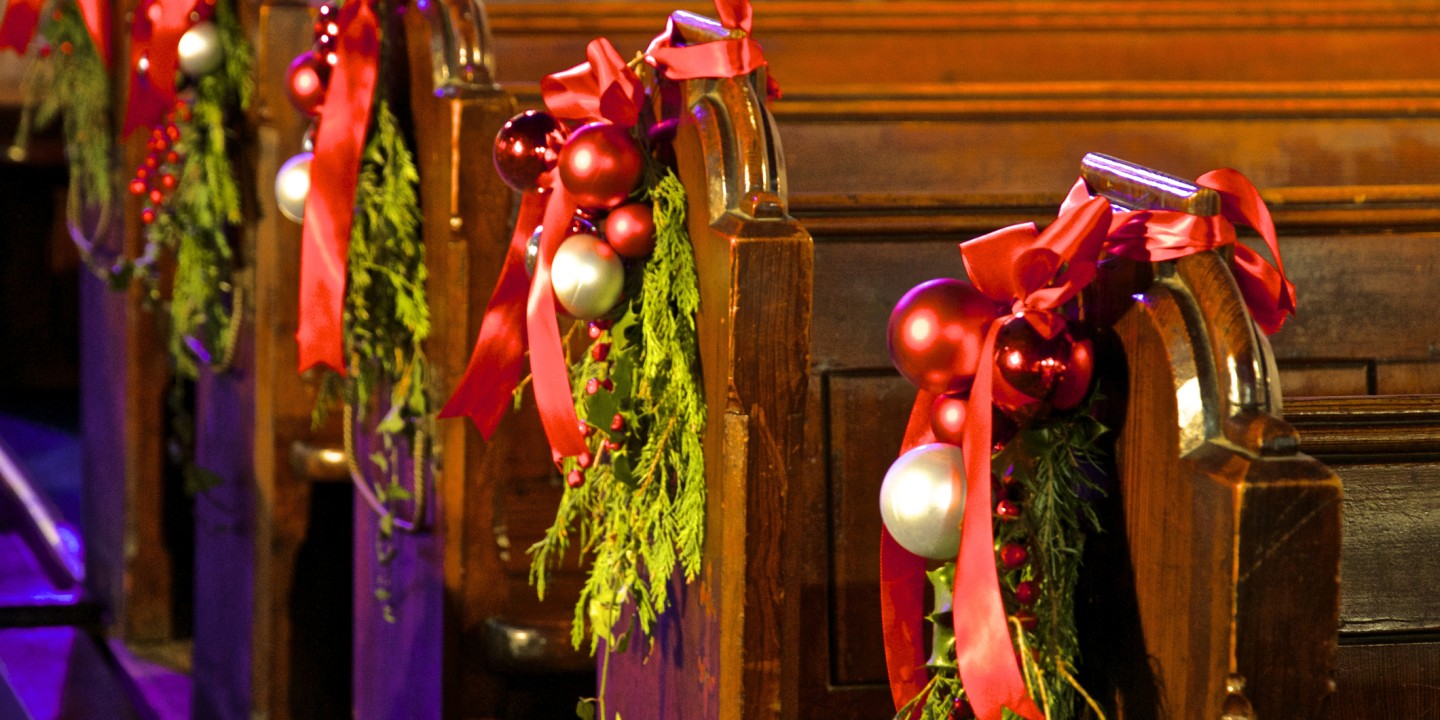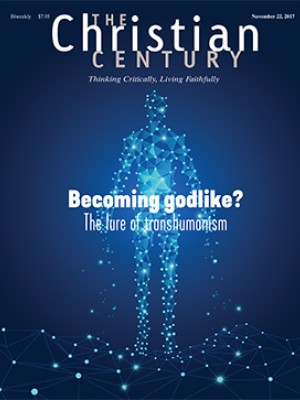Why my church stopped decking the halls
A new family skipped a lot of our holiday activities—and got me thinking.

“We don’t celebrate Christmas.” I was visiting Michael and Pam, who along with their children had begun attending my congregation. After asking them to tell me about themselves, they offered this startling statement. Aside from meeting Jehovah’s Witnesses, I had never encountered Christians who did not celebrate Christmas.
“What do you mean?”
Michael and Pam said that they and their children did not go to Christmas parties, decorate Christmas trees, sing holiday songs, perpetuate the Santa myth, or exchange gifts.
No parties? No gifts? Aren’t their children bound to be marginalized by their friends and grow up feeling deprived of one of life’s greatest joys? “How come?” I asked.
They listed several reasons: the December 25 holiday co-opted the winter solstice celebration of the ancient Romans; Christmas trees and hanging greens are derived from pagan rituals; perpetuating belief in Santa deceives children; an exhausting round of parties is hardly a way to await Jesus’ birth; and an emphasis on gift giving is part of a marketing ploy that props up our consumer economy.
Read our latest issue or browse back issues.
Then they asked, “So what do you believe about celebrating Christmas?”
I said that for me it makes sense to have joyous traditions celebrating Jesus’ birth since the incarnation is at the heart of the good news for the world. Although some of our Christmas traditions may have originated in pagan celebrations, the church has reinterpreted them in a Christian way, giving them Christian meaning. I agreed with their hesitation about telling children that a jolly old elf named Santa is real, but I reminded them that Santa is based on a real person, Nicholas, bishop of Myra, who helped create the Nicene Creed and, according to tradition, rescued three girls from poverty and prostitution. Gift giving, I suggested, is an expression of love and generosity, reflecting the homage paid to Jesus by the Magi. December 25th may not be the date of Jesus’ birth, but it’s as good as any other date to celebrate.
The couple were not persuaded, but they did not insist on their own position nor ask that the church make any changes on their behalf. They respected what God was leading me and other members of the congregation to do and hoped that we would respect what God was leading them to do. I affirmed that approach, and the subject was dropped.
When the season of Advent rolled around, I noticed that the new family was absent from the worship services and Sunday school classes. Michael and Pam’s children participated in our annual Christmas drama, but not in a Christmas Eve skit I had written nor in some other activities to which they had been invited. I realized that I should have explored in more detail what Advent and Christmas observances they felt comfortable participating in and which ones they didn’t. To avoid putting them in the position of having to decline unwanted invitations next Advent and Christmas, I broached the subject with them again.
During this second round of discussion, I heard certain themes more clearly than I had the first time. Michael pointed out the enormous consumerism at the heart of Christmas. Yes, giving gifts is a nice thing to do, but isn’t the orgy of materialism opposed to the message about a child born in a cattle trough? We justify massive gift giving by pointing at the gifts brought by the Magi, but those were gifts for Jesus, not us. Giving Christmas gifts has become an obligation, which in turn obligates the receiver to reciprocate. This mutual back-scratching does not reflect God’s unconditional gift to us, nor our free and grateful submission to Christ. It’s a scheme foisted on us by manufacturers whose companies need to make the majority of their profits during the Christmas season or they go out of business.
Pam spoke about glittery rituals that have no biblical basis or meaning and become a kind of alternative religion competing with Christ. How many children can pay attention to the meaning of the incarnation when they are encouraged to focus on gingerbread houses, candy canes, ornamented Christmas trees, and Christmas lights? Santa is no Saint Nicholas. He’s a Coca-Cola advertisement symbolizing the complete secularization of Christmas, replacing Jesus’ poverty, vulnerability, and self-sacrifice with magic reindeer, a pile of toys, and “Ho, ho, ho!”
As the couple talked, I was forced to think about how much Christmas had been subverted in my own household. Even though I am a pastor, my own children showed no interest in Jesus when Christmas Day dawned. The crèche I set up received little attention, being overshadowed by the extensive collection of nutcrackers and Santa Clauses on display. The rituals of getting chocolate in their stockings, listening to holiday pop songs, opening presents, playing with the latest toys, eating a huge dinner, and going out to the latest blockbuster movie overwhelmed the spiritual meaning of the day, year after year. As I thought about it, it seemed that Christmas celebrations had done more to shape my children as pagans, not Christians.
I was particularly struck by Michael and Pam’s perspective on store clerks who wish customers, “Merry Christmas!” Unlike the many anxious Christians who excoriate the secular phrase “Happy holidays!” and want shops to revert to the traditional Christmas greeting, Michael and Pam wanted to distance Christ and his name as far as possible from commercial transactions. Christ has nothing to do with our shopping frenzy, nor with most of our society’s celebrations at the end of December. As they saw it, it’s better to keep things clear by removing Christ’s name from this flurry of secular hedonism.
I left that conversation with my spirit challenged and my mind changed, and I began thinking about how my congregation should observe Advent and celebrate Christmas. In my own home, I can translate popular rituals into my faith. But the church is different. Its observances must clearly line up with its mission. The church cannot afford to sow confusion or offer a muddled message.
At the next meeting of the elders, I shared what I had learned from Michael and Pam. I explained that Michael and Pam were not expecting us to make any changes but that I wanted the elders to support my review of our Advent and Christmas rituals, not only for the sake of helping us to include this family but to sharpen the congregation’s biblical message. The elders agreed.
As a result, I brought a proposal to our worship commission that for the coming Advent season we use only biblical symbols in the church and refrain from activities or traditions associated with the commercialization and consumerism of Christmas. After hearing the rationale for the proposal, the commission responded with enthusiasm. The group decided not to hang Advent wreaths or put greens around the Advent candles. The artificial Christmas tree which had always stood in the narthex during Advent was left in storage. The sermon themes for Advent would focus on countering consumerism and promoting simplicity and compassionate generosity toward those in need.
The worship commission also decided to shelve two traditions: singing carols at the local yogurt shop as part of its holiday promotion and buying Christmas presents for designated low-income families. It concluded that buying the latest toys and fashions for poor families—as well as for our own families—was not the best way to address poverty or promote a sustainable lifestyle.
I asked the leaders who oversaw children’s ministry if they would come on board. They responded by making sure the children’s annual Christmas program had a strong biblical orientation and asking Sunday school teachers to avoid class discussions about getting presents or going to parties.
When I informed Michael and Pam of the shifts we were making, they expressed appreciation but worried that some members might be upset and blame them for the changes. I assured them that the changes sprang from our own desire to strengthen our message and mission.
When Advent arrived, Michael and Pam, along with their children, were present every Sunday, participating fully. The worship services invited the congregation to join the hope of the poor throughout the ages, to let go of a life drowning in stuff, and to recognize the advent of our salvation in swaddling clothes. We replaced holiday sentimentality with self-emptying service.
The overall response of the congregation was positive. When the worship commission met in January to review the preceding weeks, it decided to continue many of the new practices and look for ways to expand the use of explicitly Christian symbols in Advent and Christmas.
A few people said they missed having wreaths hanging on the church doors during Advent. Although not a biblical symbol, the wreath does have symbolism for Christians: the circle, as well as the greens, represent eternal life. The commission decided to bring back the wreaths and do more to explain their Christian meaning. The Christmas tree, however, would not be coming back.
When I told Michael and Pam about the worship commission’s approach, they expressed amazement that our church had been willing to adjust some of its cherished traditions. But it shouldn’t be amazing for the church to do all it can to make the good news of Christ clear.
A version of this article appears in the November 22 print edition under the title “Don’t deck the halls.”






